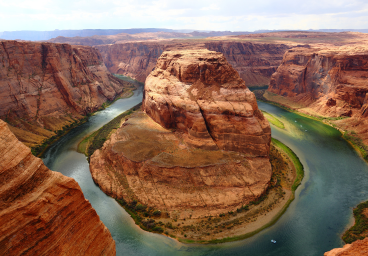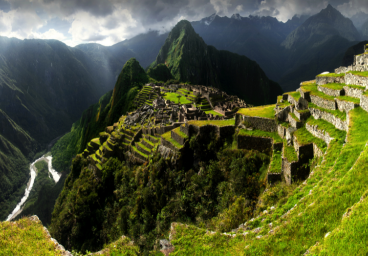Carved by the mighty Colorado River over millions of years, the Grand Canyon stands as an awe-inspiring testament to the power of nature. Located in the heart of Arizona, USA, this vast and magnificent chasm is a geological wonder that invites visitors to witness the grandeur of Earth’s history etched into its colorful cliffs and deep canyons.
Geological Origins
The Grand Canyon’s geological story spans over 1.7 billion years, revealing layers of sedimentary rock that chronicle the Earth’s transformative processes. The canyon itself began forming around five to six million years ago as the Colorado River relentlessly cut through the rock, exposing a cross-section of the Earth’s crust.
Canyon Dimensions
Stretching over 277 miles (446 kilometers) in length, up to 18 miles (29 kilometers) in width, and plunging to depths of over a mile (1.6 kilometers), the Grand Canyon is a colossal landscape of unparalleled scale. Its vastness and intricate rock formations make it one of the world’s most iconic and studied geological features.
South Rim and North Rim: Contrasting Views
The Grand Canyon is often explored from two main vantage points: the South Rim and the North Rim. The South Rim, more accessible and open year-round, offers panoramic views and a range of visitor facilities. The North Rim, higher in elevation and with a shorter visiting season, provides a more remote and serene experience.
Striking Rock Formations: Vishnu Basement Rocks to Kaibab Limestone
The canyon exposes a breathtaking sequence of rock layers, each representing a different geological era. From the ancient Vishnu Basement Rocks at the bottom, dating back to Precambrian times, to the younger Kaibab Limestone at the top, the canyon’s layers offer a visual timeline of Earth’s geological history.
Colorado River: Lifeblood of the Canyon
The Colorado River, flowing through the heart of the canyon, is a vital force that continues to shape and carve the landscape. Its powerful currents have played a crucial role in the formation of the Grand Canyon, contributing to the intricate network of side canyons and creating the mesmerizing patterns visible from the rim.
Havasu Falls and Havasu Creek: Oasis in the Desert
Located within the Grand Canyon, the Havasu Falls and Havasu Creek are a hidden gem known for their turquoise blue waters contrasting against the red rock surroundings. Accessible by a challenging hike, these stunning waterfalls and vibrant pools create an oasis of beauty in the desert landscape.
Grand Canyon Skywalk: Thrilling Perspective
The Grand Canyon Skywalk, a cantilevered glass bridge on the Hualapai Reservation, offers a breathtaking and thrilling perspective. Extending 70 feet (21 meters) over the rim, visitors can walk on transparent flooring for a vertigo-inducing view of the canyon floor nearly a mile below.
Breathtaking Sunrise and Sunset Views
The changing colors of the canyon, especially during sunrise and sunset, create a magical spectacle. The play of light on the canyon walls transforms the landscape into a canvas of warm hues, casting shadows and revealing the intricate details of the rock formations.
Biodiversity and Ecosystems
Despite its arid appearance, the Grand Canyon harbors a surprising diversity of plant and animal life. From the iconic California condor soaring above the cliffs to the resilient desert flora adapting to the harsh conditions, the canyon supports a unique and varied ecosystem.
Preservation and Conservation
Designated a national park in 1919, the Grand Canyon has been a focal point for conservation efforts. The park’s vastness and ecological significance make it a UNESCO World Heritage Site, and ongoing initiatives aim to preserve its natural beauty and ensure its protection for future generations.
Conclusion
The Grand Canyon stands not just as a colossal geological formation but as a living testament to the Earth’s ancient history and the ongoing forces that shape our planet. Its vast expanses, intricate rock layers, and the rhythmic flow of the Colorado River create a sensory symphony that transcends the boundaries of time. The Grand Canyon is a reminder of nature’s sublime artistry, inviting all who stand on its rim to contemplate the majesty of the natural world.



